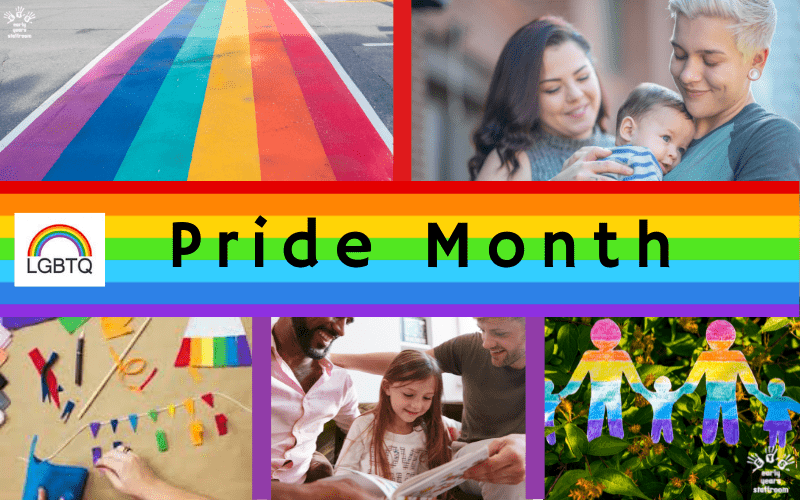

Pride Month, celebrated in June, is an opportunity to recognize and celebrate the LGBTQ+ (Lesbian, Gay, Bisexual, Transgender, Queer/Questioning, and others) community and promote diversity, inclusion, and acceptance.
In an early years setting, educators can introduce children to Pride Month and its significance in a fun, age-appropriate, and inclusive manner.
Here are some ideas for celebrating Pride Month in an early years education setting:
Rainbow Art: Organize art and craft activities using rainbow colors, which are symbolic of the Pride flag and the LGBTQ+ community. Ideas include rainbow collages, finger painting, or creating rainbow paper chains. Discuss the meaning behind the rainbow colors and how they represent the diversity of people and families.
Songs and Music: Teach children simple, age-appropriate songs that promote love, kindness, and acceptance, such as “We All Sing with the Same Voice” or “It’s Okay to Be Different.” Sing these songs together during circle time or throughout the month to celebrate Pride Month.
Circle Time Discussion: Talk about the importance of love, kindness, acceptance, and respect for all people, regardless of their differences. Encourage children to share their thoughts and experiences related to these themes and discuss ways they can practice these values at home and school.
Acts of Kindness: Encourage children to participate in small acts of kindness towards their classmates, teachers, and family members. Share stories of kindness, acceptance, and love as a way to emphasize the importance of treating all people with respect.
Celebrate Diversity: Use Pride Month as an opportunity to celebrate diversity in general. Discuss different cultures, families, and traditions and emphasize the importance of respecting and appreciating the uniqueness of every individual.
By incorporating Pride Month celebrations into your early years setting, you can introduce children to the importance of diversity, acceptance, and kindness while fostering a sense of empathy and understanding for others. Remember to adapt the activities to the age and abilities of the children in your care to ensure a safe and enjoyable learning experience.